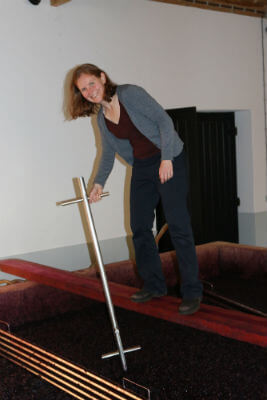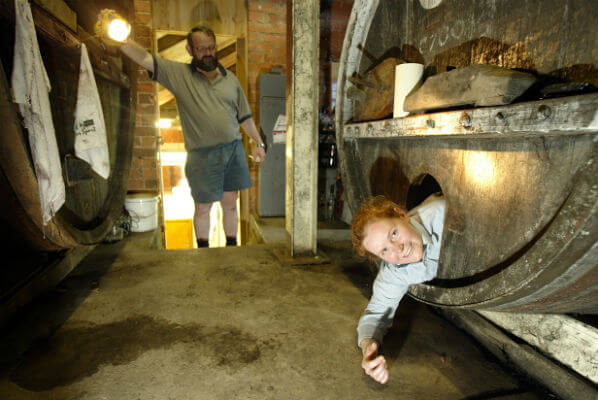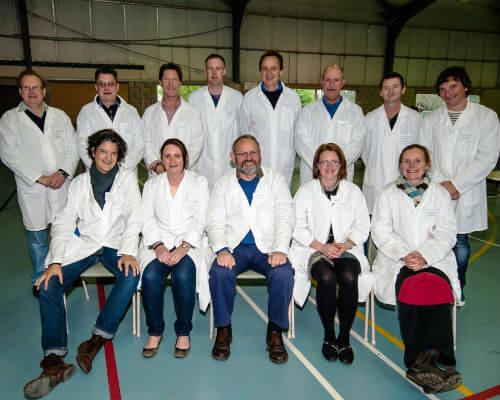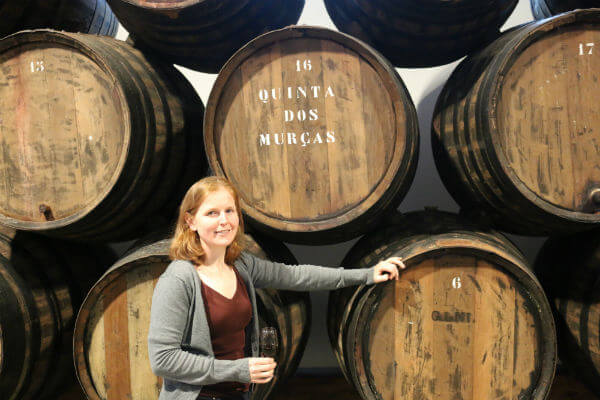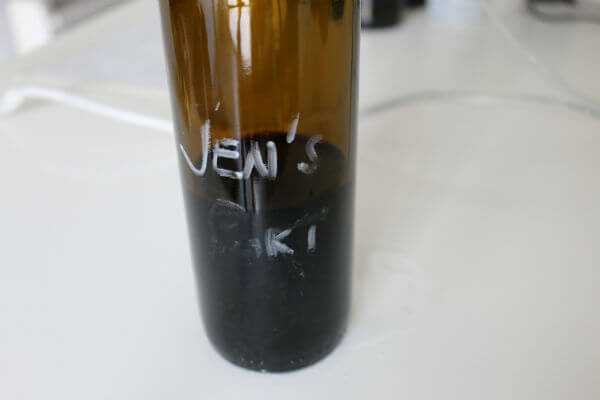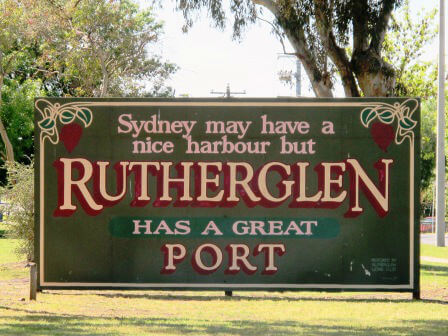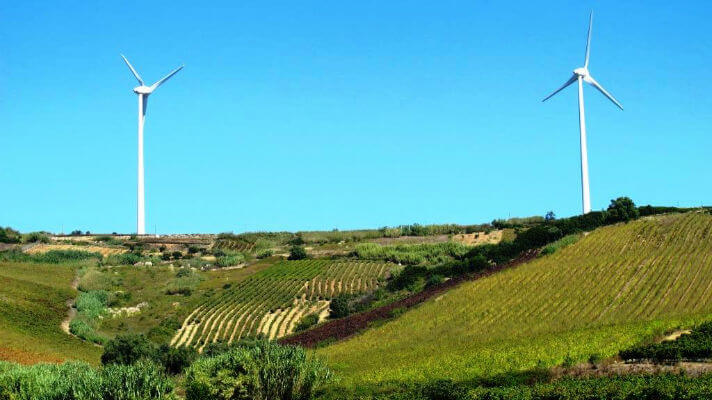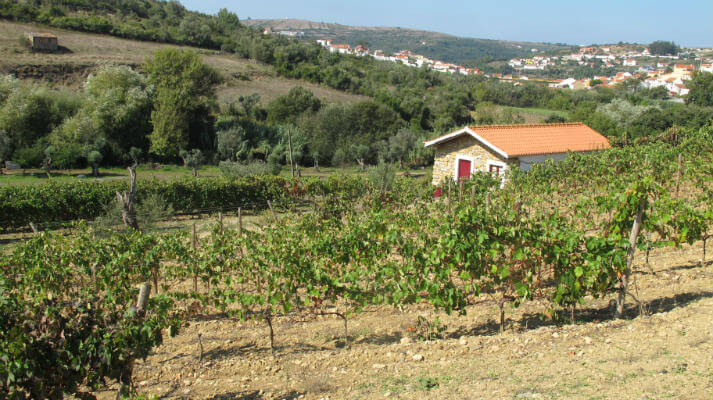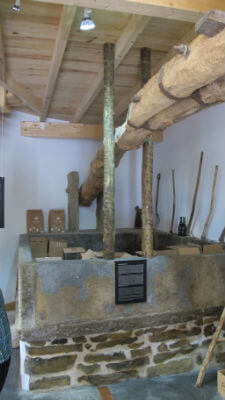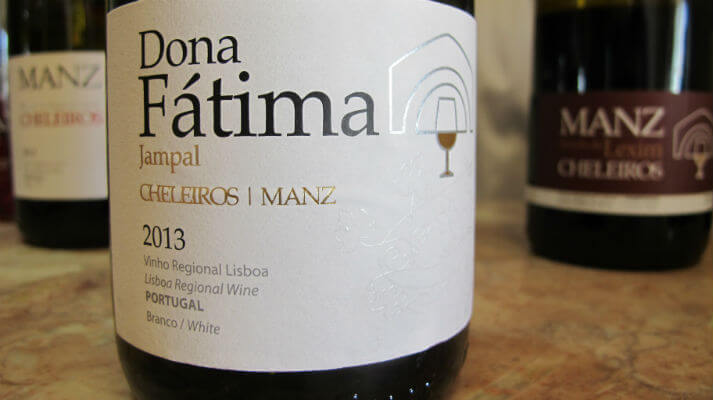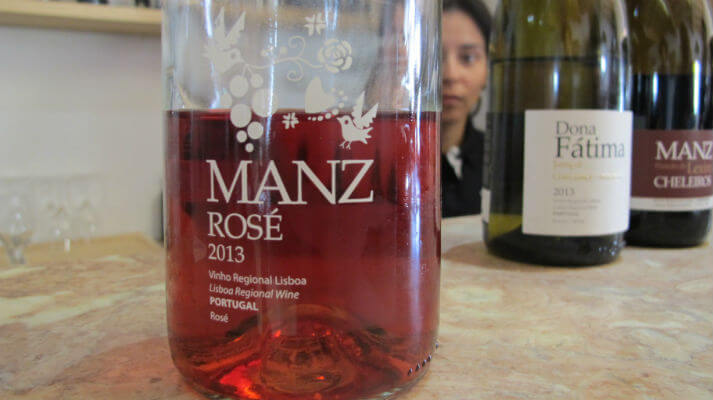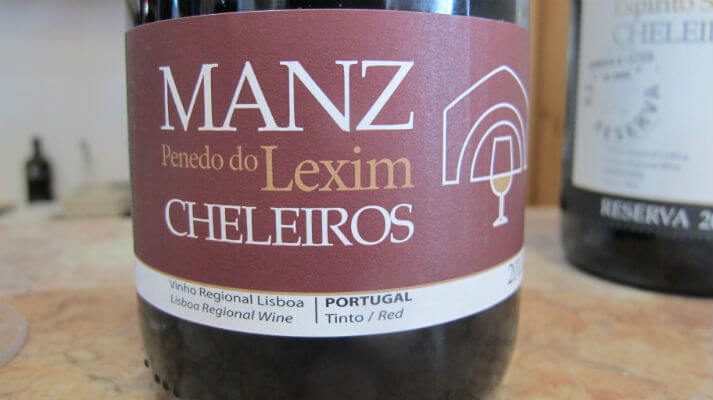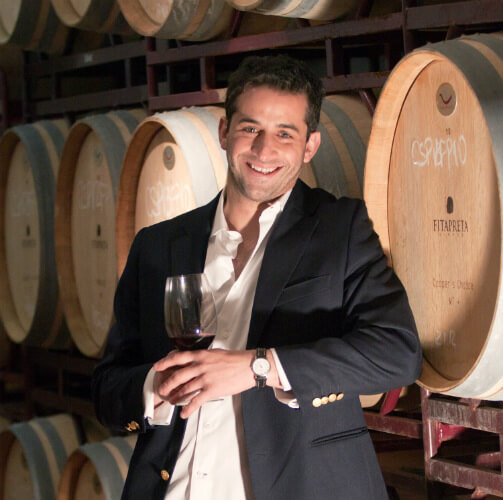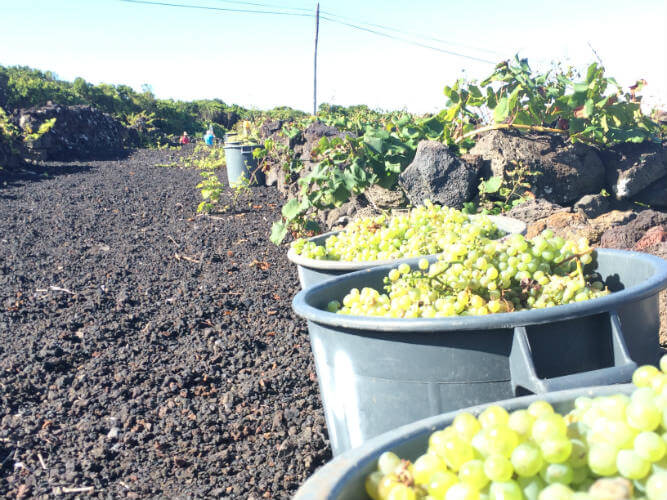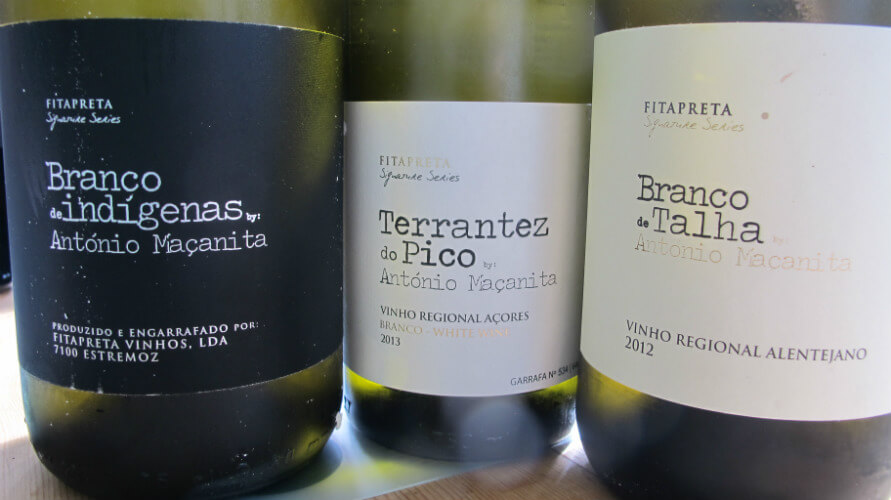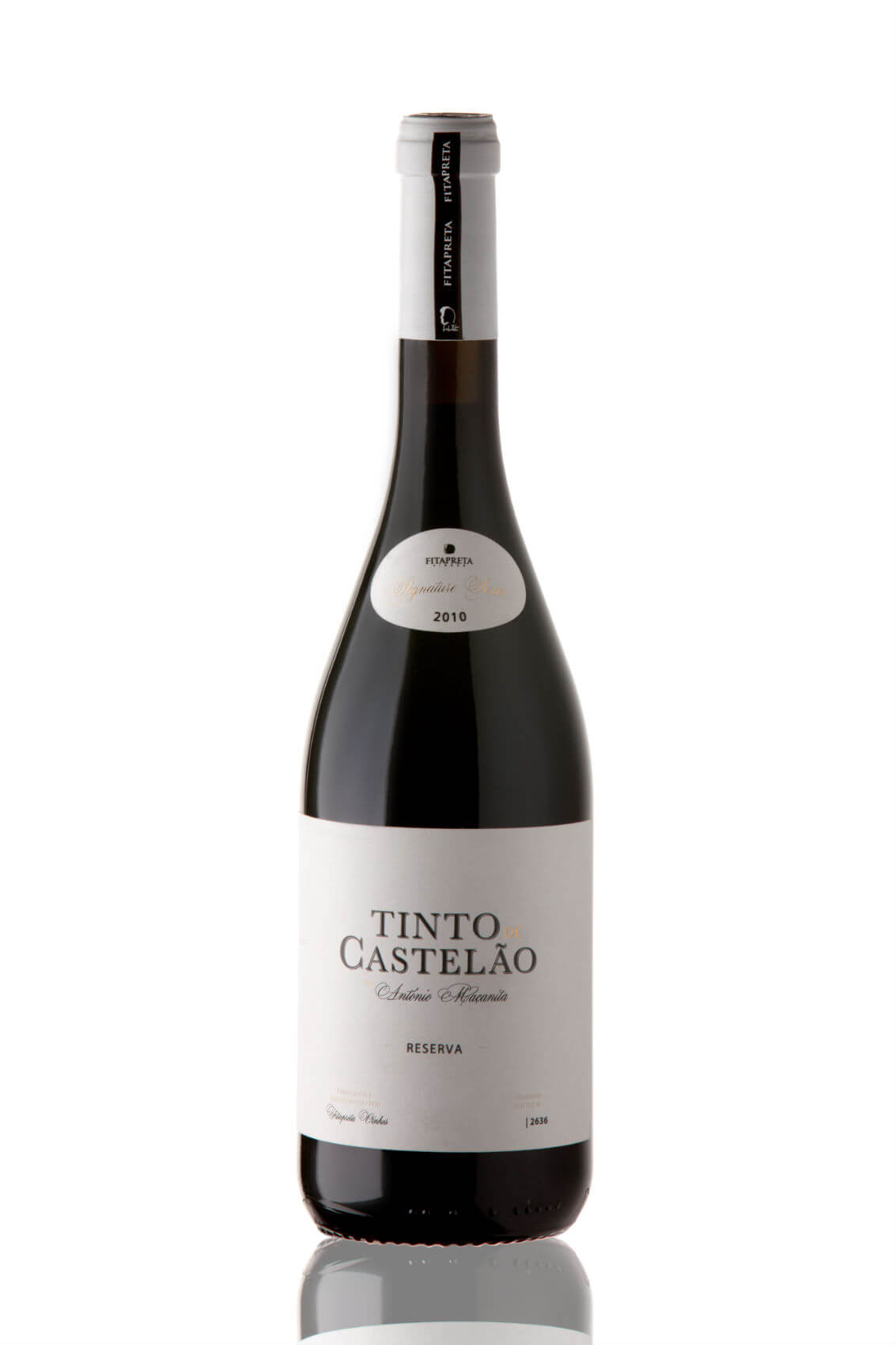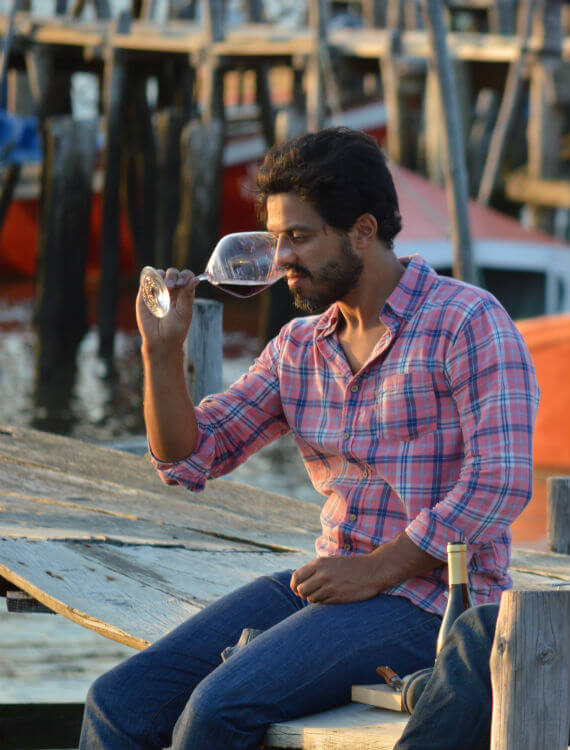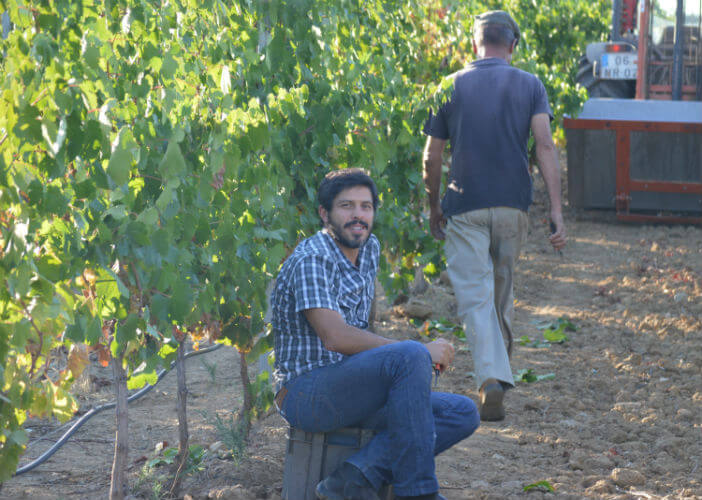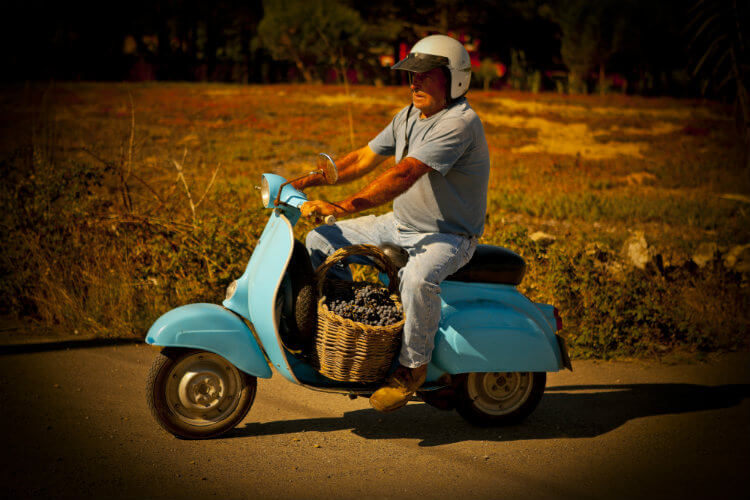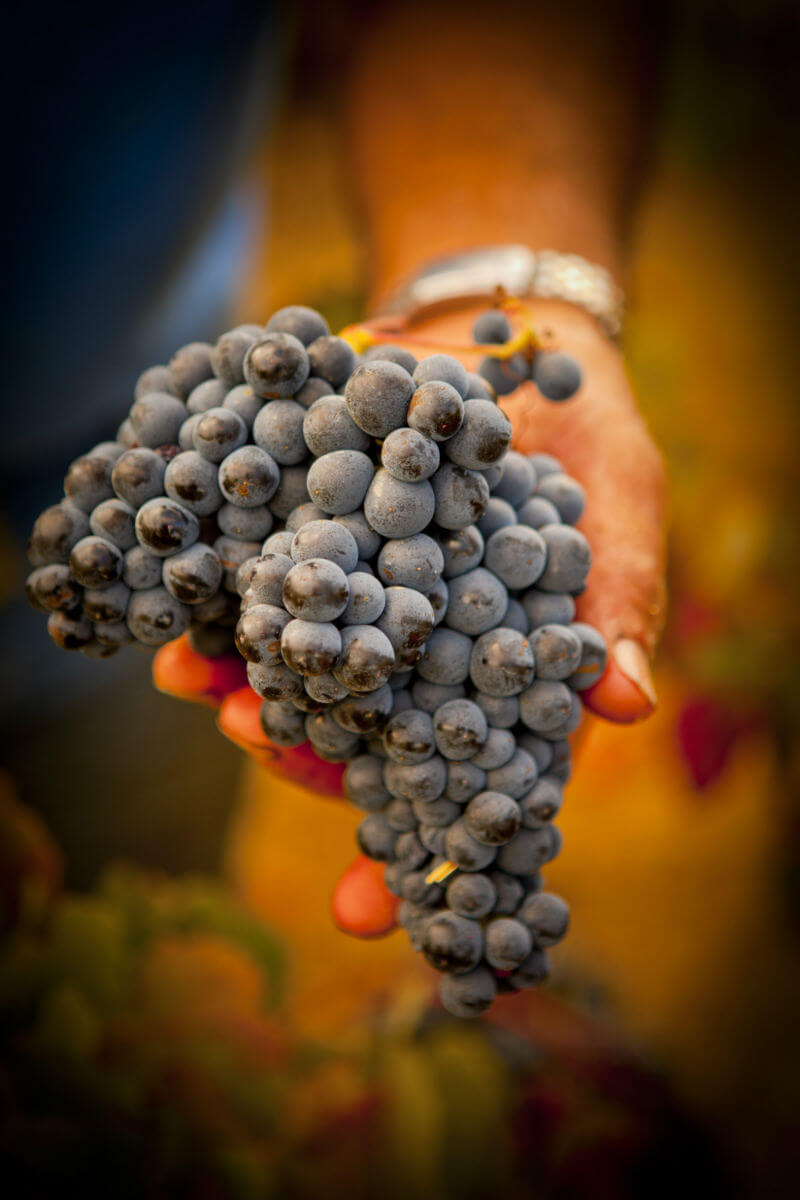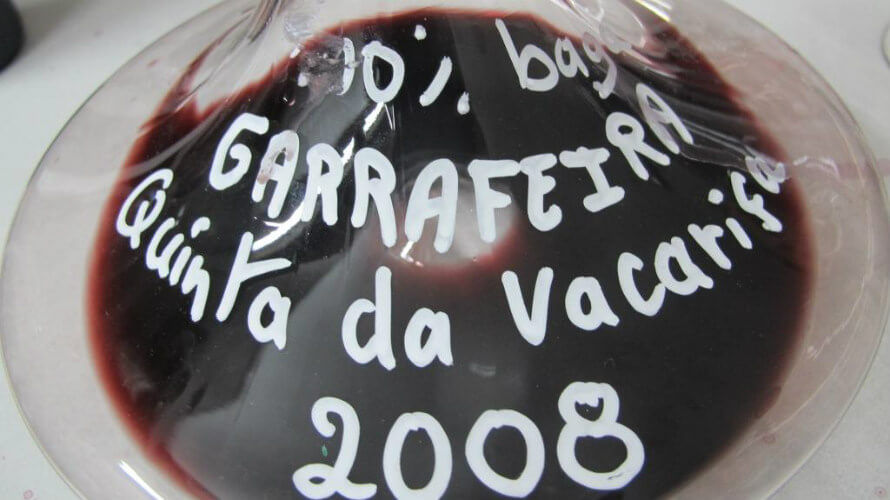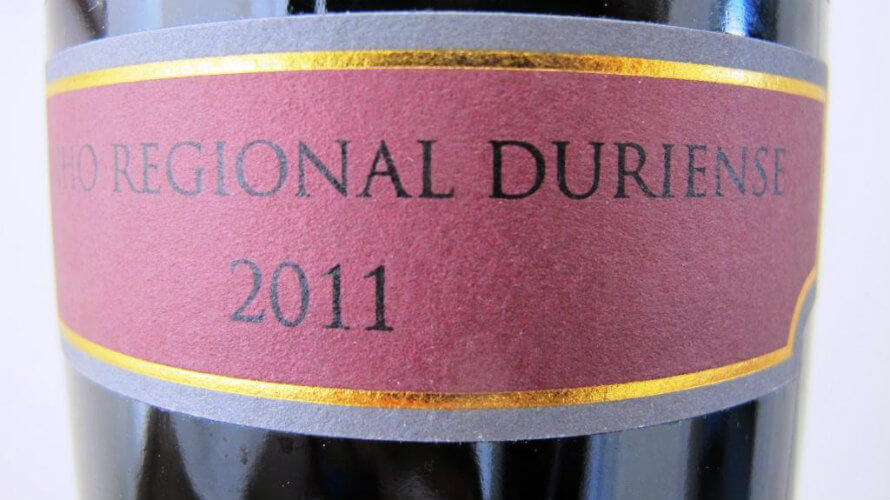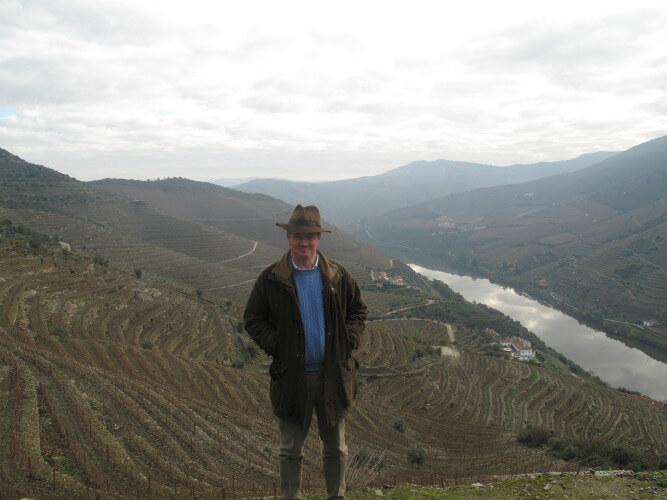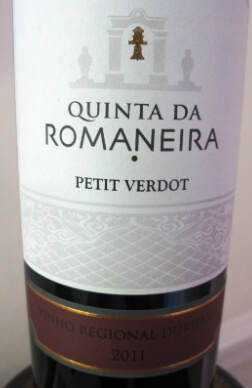Me & My Shadow: On The Road With Luís Sottomayor, Douro Harvest 2014
Text Sarah Ahmed
Each Douro harvest, Luís Sottomayor clocks up between 10,000 and 15,000 kilometres in two months driving back and forth between vineyards and wineries to assess the grapes and make wine. Hard work! But, for Sogrape’s Head Winemaker, it’s by far and away his favourite time of year. At the end of September I spent three days shadowing Sottomayor to find out about a life in the day of a Head Winemaker at vintage.
So what did I discover on our Vintage 2014 road trip? Well, for starters, let me say it came as no surprise when Sottomayor confided he would have pursued a career in the army had he not followed the family tradition and entered the wine business. The man has nerves of steel. Overseeing such a sizeable grape harvest is like a military campaign, even if it is your 26th vintage.
On the one hand, it calls for strategic thinking, especially forward planning. Sottomayor must first assess production demands for each and every one of the many Port and DOC Douro wine styles and brands (including Ferreira, Sandeman, Offley and Casa Ferreirinha). Then he must evaluate how those demands will be met, both by Sogrape’s 500 hectares of vineyards and by suppliers (of grapes and wine). A master-plan outlines what grapes will be picked, when and from where.
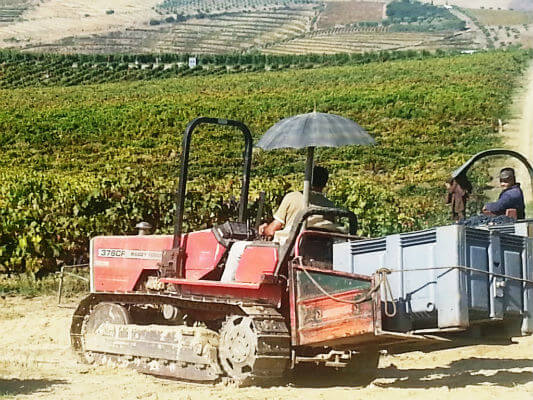
Prepared for Rain or Shine Harvesting at Quinta do Sairrão in S. João Pesqueira – Photo by Sarah Ahmed | All Rights Reserved
On the other hand, the vintage “campaign” requires quick reactions. Where there is no accounting for Mother Nature’s curve balls, it pays to be flexible. The 2014 vintage is a case in point. Although Sottomayor and his team review the harvest masterplan weekly from August, because rainfall was “intense”, harvest dates had to be rapidly revised and re-revised (with perhaps a 20% deviation from the original plan, reckons Sottomayor).

Luís Sottomayor a.k.a. Mr Secateurs at Quinta do Caêdo – Photo by Sarah Ahmed | All Rights Reserved
Where an army of people – between 200-300 – is required over the harvest period, top notch leadership skills are also critical. And Sottomayor, a.k.a. Mr Secateurs, is perfectly prepared to lead by example. The famously fastidious winemaker is photographed at Quinta do Caêdo discarding bunches affected by rot brought on by the rains. I half wondered if he was going to assume the role of drill instructor, roll his trousers up and jump into the lagares at Quinta do Seixo to supervise the foot-treading!
But I digress. Let’s start at the very beginning at Quinta do Porto in Sabrosa near Pinhão where we spent a damp, misty morning with the property’s dedicated viticulturist Vitorino tasting Tinta Roriz. The aim? To assess berry size (which will impact on production), when the grapes should be picked and where the fruit will end up – in Port or Douro wine and at what level of quality. For Sottomayor, although satellite imagery is used to help assess grape maturation, there is no substitute for visiting the vineyard to taste the grapes.
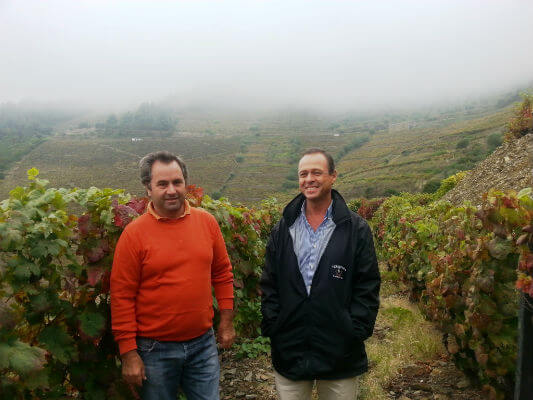
Luís Sottomayor with Vitorino at Quinta do Porto – Photo by Sarah Ahmed | All Rights Reserved
Lesson one is to avoid grapes from those rows which border the vineyards. The soil is richer and more productive here, which means that the grapes are unrepresentative. So we dive deeper into the vineyard where it’s fascinating to taste Tinta Roriz from two different parcels (areas). Sottomayor reckons the first will end up in basic wines or Ports while the second, which shows better structure and perfume, is destined for higher things. The first, will be fermented in vats and undergo a gentle extraction. As for the better quality fruit, “we’ll extract everything” says Sottomayor who, thanks to its mild conditions, rates 2014 for Tinta Roriz which he reckons only does well one year in every ten. It will be foot-trodden in lagares.
We also take our first look at Touriga Franca vines. Though he describes the variety as “normally the best friend of the winemaker,” the rain hasn’t been kind. As Sottomayor anticipated, there are the first signs of rot (Touriga Franca has relatively compact bunches so, when it rains heavily, grapes swell, push against each other and can split, allowing infection to take hold). A whiff of vinegar (oxidised grape juice) can give away the worst affected bunches, but Sottomayor looks beyond the surface and pulls bunches apart to check for signs of splitting or rot. He decides that the vineyard should be harvested quickly – in two days time.
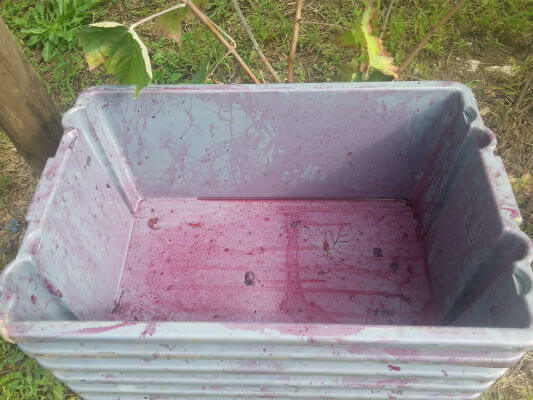
Harvesting Sousão at Quinta do Caêdo – Photo by Sarah Ahmed | All Rights Reserved
Moving swiftly on, next we cross the river to visit Quinta do Vau and Quinta do Caêdo in Ervedosa do Douro where a team is hard at work harvesting the red-fleshed Sousão (hence the florid purple-stained boxes). As we walk through the vineyard Sottomayor discards a dozen or so bunches in swift succession, explaining “you need to throw them down because, during transport, rotten grapes would [taint and] ruin the whole 25kg in the box.”
As Sottomayor predicted, at noon the sun comes out and our picnic lunch among the vines goes ahead despite an inauspicious start to the day. Then it’s off to Quinta do Seixo (Valença do Douro) to taste samples of fermenting and fermented grapes which were picked before the heavy rains. These dark, rich but balanced blending components bear out the reports that, but for the rains, this could have been a classic Vintage Port year.
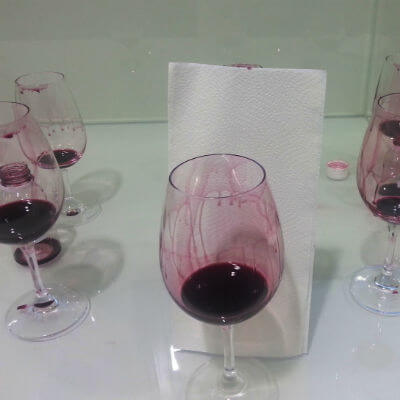
Inky Port samples at Quinta do Seixo – Photo by Sarah Ahmed | All Rights Reserved
It’s fun to taste Ports in their raw youth and contrast a field blend with a single varietal Tinta Francisca (floral and elegant). It’s my first taste of the variety flying solo and, it transpires, the first time Sottomayor has made it. The relatively rare variety was only planted in 2008 so he wants to get the measure of it. Usually, for better integration and balance, he prefers to co-ferment different varieties (and different vineyard expositions) together rather than back blend. The harvest is planned accordingly.
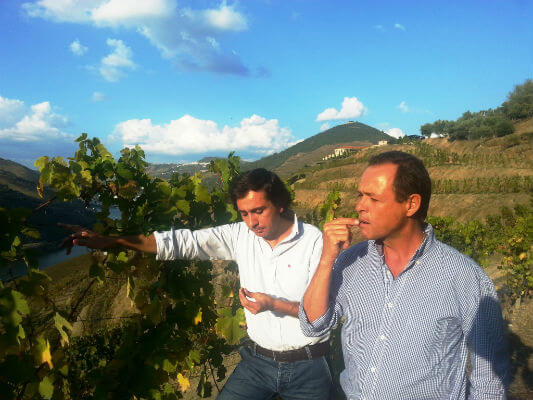
Luís Sottomayor with Eduardo Gomes tasting Touriga Nacional at Quinta do Seixo – Photo by Sarah Ahmed | All Rights Reserved
After the tasting we visit the vineyard where Sottomayor and Eduardo Gomes treat me to a masterclass in identifying which Touriga Nacional grapes are ready to harvest. First, when you pick a berry it should come clean away from the stem. Then, when you gently squeeze the berry between thumb and forefinger, ripe and ready-to-pick berries retain the impression (indent) of your finger and thumb. Mature skins should not be bitter or vegetal, but the best guide to tannin quality is the seeds. These should be brown and crunchy, not chewy. They should “shatter” in the mouth. The pulp should retain good acidity and perfume.
Though Sottomayor reckons another week on the vine would allow the Touriga Nacional at the first site (poorer soils) to attain perfect ripeness, he must be pragmatic. Lots more rain is forecast for 7 October so he decides it should be picked the next day. As Gomes points out “we wear two hats, of the viticulturist and the winemaker and, today, the viticulturist wins.” Even so, Sottomayor believes that the Touriga will make the grade for Reserve Douro DOC/Vintage Port. As for the parcel of Touriga Nacional vines we visit on richer soils, close to a water course, it’s another story. This parcel is less ripe so must wait another week before it can be harvested.
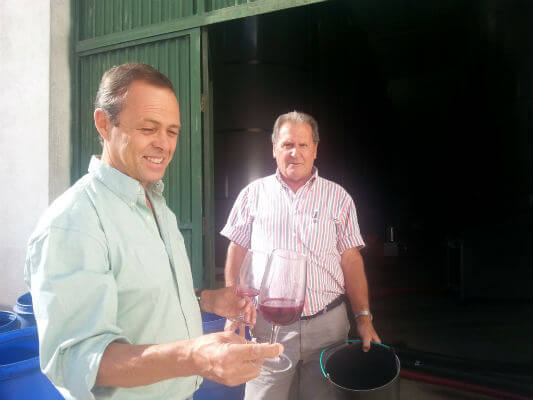
Luís Sottomayor tasting with a supplier photo – Photo by Sarah Ahmed | All Rights Reserved
On day two we drop by a third party supplier to assess some young, basic Ports en route to Sogrape’s highest Douro vineyard, the sizeable 120ha Quinta do Sairrão in S. João Pesqueira. Rising (from 120 metres) to around 700 metres above sea level, its higher tiers make it the coolest, latest picked vineyard. It has contributed to the high altitude component Casa Ferreirinha Barca Velha since 2006 and is also responsible for the accomplishment of a new white wine, Casa Ferreirinha Antónia Adelaide Ferreira 2012.
Unusually, because the rainfall has been worse at the top of the vineyard, the higher vineyards are being picked first. With more expected, it’s a good thing that elevation also means good wind exposure. It helps to dry the fruit. To take full advantage of it, the previous week Sottomayor gave the instruction to de-leaf the Touriga Nacional and Touriga Franca vines to expose the grapes to the sun. However, ideally both still need a fortnight for flavour development and optimal tannin ripeness. While acknowledging it’s a risk to leave it, he has to balance this risk with the fact it could yet attain reserve quality. It’s a chance he is prepared to take though, he adds, if it rains, “we will come running!” On a happier note, the Tinta Roriz from the higher vines looks very good here too and is being harvested that day.
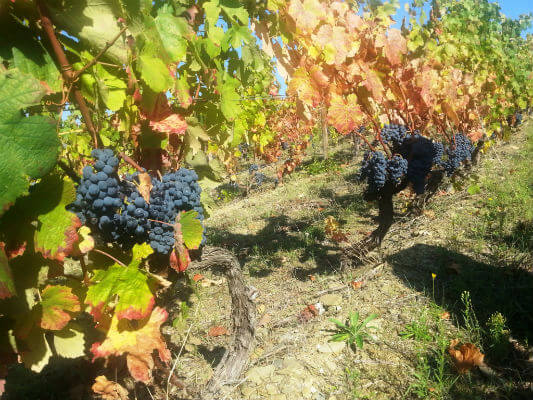
De-leafed vines at Quinta do Sairrão in S. João Pesqueira – Photo by Sarah Ahmed | All Rights Reserved
Next we taste some white wines from tank and barrel, all harvested before the rain. Sottomayor is pleased with the quality which he assesses as “better than 2013, with more acidity and very clean.” (An assessment which is reinforced by our final tasting at Quinta do Cavernelho in Vila Real on the homeward leg back to Oporto).
As we taste rosé, red wine and Port samples from the estate made from fruit picked before and after the rains, Sottomayor points out the advantages of having so many blending components at his disposal from different locations (and within those locations, from different aspects and elevations). Speaking of which our day ends with visits to a couple more grower vineyards and the Adega Freixo de Numão co-operative where we agree on which two of the four red Port samples best fit the bill for Ruby or Tawny. But for a vicious wasp attack on a sugared-up yours truly, we’d have packed in another visit too.
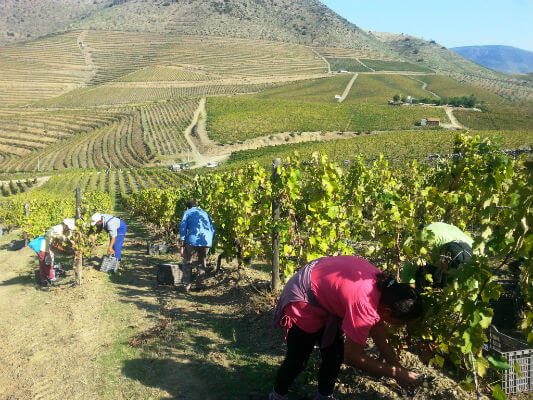
Harvest at Quinta da Leda, Almendra – Photo by Sarah Ahmed | All Rights Reserved
By day three we are in the heart of the Douro Superior and visiting the jewel in the crown for Sogrape’s red Douro DOC wines, Quinta da Leda in Almendra, the principal source of Barca Velha. Resident winemaker António Braga has 50 people harvesting here today to speed things up. He explains it has been an unorthodox year with 90mm of rain during the harvest which, in 2005, represented the entire year’s rainfall!
Though it has resulted in some dilution and rot, Braga says that the warm weather which followed has helped the vines to recover. He believes “it’s still a very, very good year for grapes picked after the rain. And an amazing year for grapes picked before the rain” (and it shows in the samples we taste). What’s more, where the Touriga Franca grapes are always smaller at Leda, berry splitting has not been as problematic as elsewhere.
Still, where the grapes are more dilute than usual, Sottomayor decides that they need another week to 10 days to concentrate – it will be the last picked variety, which is risky, so he and Braga agree to pick some parcels earlier to mitigate the risk. At least it’s less likely to be eaten by the wild boars that forage in the vineyards. Apparently, they prefer (sweeter varieties) Touriga Nacional and Tinta Barroca.
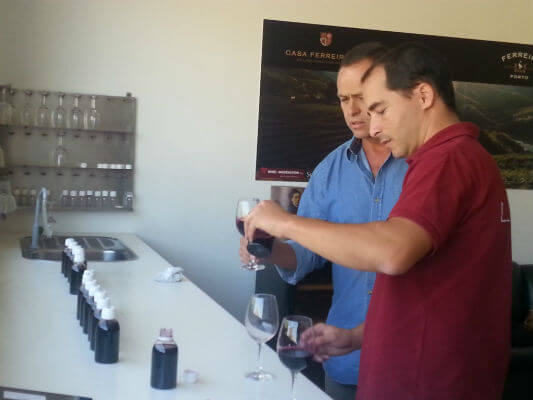
Luís Sottomayor tasting with António Braga at Quinta da Leda, Almendra – Photo by Sarah Ahmed | All Rights Reserved
As for end consumers, what matters is the quality of the finished wines. Let’s not talk battles, has Sottomayor won the war in 2014? Though he points out that the quality of the reds will become clearer in November after the wines have completed their malolactic fermentation, when I caught up with him a fortnight later in London for a sneak preview of Sandeman Cask 33 Very Old Tawny Port he told me that while the vintage was still underway (and it was raining that day at Quinta do Sairrão), he was “very happy” with the wine quality, including the Touriga Franca which he had harvested a week earlier….beautiful aromas, but it’s still fermenting, we’ll see….” Not just a man of military precision then, but a politician too!
Five days later I received Sogrape’s vintage report. Here’s what it says about the Douro:
“At Quinta do Seixo, picking began on 4th September, with grapes from the Quinta itself and from Quinta do Caêdo, from the vineyards closest to the river Douro and with a W and SW exposure. By 15th September, 600 tonnes had already been picked, and the enthusiasm amongst the cellar workers was tangible due to the quality of the grapes coming in and the results achieved during fermentation.
Eduardo Gomes, responsible for vinification in this cellar, attributed this result to the level of consistency seen throughout the maturation, due to the mild weather. There was no excessive heat, the plants did not undergo any water stress, and this resulted in very healthy and good quality grapes.
Similarly, at Quinta da Leda in the Upper Douro, expectations were also high at the beginning of the harvest for the same reasons. António Braga, the resident winemaker at this winery, puts it down to a slow maturation during which the vine worked well, which meant that the grapes entering the cellar were in such good physiological condition.
Now, the harvest is practically in, and the Head Winemaker at Sogrape Vinhos for the Douro region, Luís Sottomayor, says that the 2014 wines are of very good quality, and he is, justifiably, very pleased. Despite the harvest taking place during almost two weeks of rain, this added to the freshness, fine fruitiness and ample volume of the wines in the mouth.
The weather that was experienced during the maturation and the harvest affected the principal grape varieties differently. This favoured Tinta Roriz in particular. According to Luís Sottomayor, 2014 was the year for this variety, since it benefitted from a cool growing cycle with no heat spikes, which led to ideal conditions for maturation. Grape formation was uniform and the skin of this variety resisted the effects of rain to produce some great wines. On the other hand, the Touriga Franca variety, which prefers high temperatures and dry weather, was not at its best in this rainy season. Nevertheless, the wines made at the beginning of the 2014 harvest when there was no rain, are of good quality.
2014 was also a good vintage for white wines because, in the opinion of Luís Sottomayor, it was a year which promoted good acidity and aromatic expression, which resulted in some elegant wines. However, the quantity was slightly less than the previous year, particularly in the higher areas.”
Contacts
Rua 5 de Outubro, 4527
4430-852 Avintes
Portugal
Tel: (+351) 227-838 104
Fax: (+351) 227-835 769
E-Mail: info@sograpevinhos.com
Website: www.sograpevinhos.com



